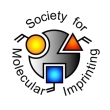
Authors: He ZH, Meng MJ, Yan L, Zhu WH, Sun FQ, Yan YS, Liu Y, Liu SJ
Article Title: Fabrication of new cellulose acetate blend imprinted membrane assisted with ionic liquid ([BMIM]Cl) for selective adsorption of salicylic acid from industrial wastewater.
Publication date: 2015
Journal: Separation and Purification Technology
Volume: 145
Page numbers: 63-74.
DOI: 10.1016/j.seppur.2015.03.005
Alternative URL: http://www.sciencedirect.com/science/article/pii/S1383586615001513
Abstract: Highly selective cellulose acetate (CA) blend imprinted membranes for salicylic acid (SA) was prepared by using phase inversion technique with sulfonated polysulfone (SPS) as a functional polymer, polyethylene glycol-4000 (PEG 4000) and ionic liquid 1-butyl-3-methylimidazolium chloride ([BMIM]Cl) as the additives. The membranes were characterized by several techniques including SEM, Raman, contact angle, membrane flux, and SA adsorptionGă˘desorption techniques. The SEM micrographs showed that the cross-sectional morphology of CA membranes was affected by polymer blend composition and applications of additives. Compared with the pure CA membrane the CA/SPS(90/10) + [BMIM]Cl membranes showed low contact angle, high membrane flux, strong adsorption capacity and high permeation selectivity. The experimental data of adsorption kinetic for CA/SPS(90/10) + [BMIM]Cl were well fitted to the pseudo-second-order kinetic model using multiple regression analysis. The selectivity coefficients of CA/SPS(90/10) + [BMIM]Cl-MIM for SA in relation to competition analogs p-hydroxybenzoic acid (p-HB) and phenol were 5.8549 and 5.9062, respectively, which suggested that CA/SPS(90/10) + [BMIM]Cl-MIM had high selectivity and binding affinity for the template SA. Overall results suggest that [BMIM]Cl can be considered as an effective additive for CA imprinted membranes in the treatment of SA-contained water
Template and target information: salicylic acid, SA, 2-hydroxybenzoic acid
Author keywords: salicylic acid, cellulose acetate, Ionic liquid, phase inversion, Imprinted Membrane



Join the Society for Molecular Imprinting

New items RSS feed
Sign-up for e-mail updates:
Choose between receiving an occasional newsletter or more frequent e-mail alerts.
Click here to go to the sign-up page.
Is your name elemental or peptidic? Enter your name and find out by clicking either of the buttons below!
Other products you may like:
 MIPdatabase
MIPdatabase









